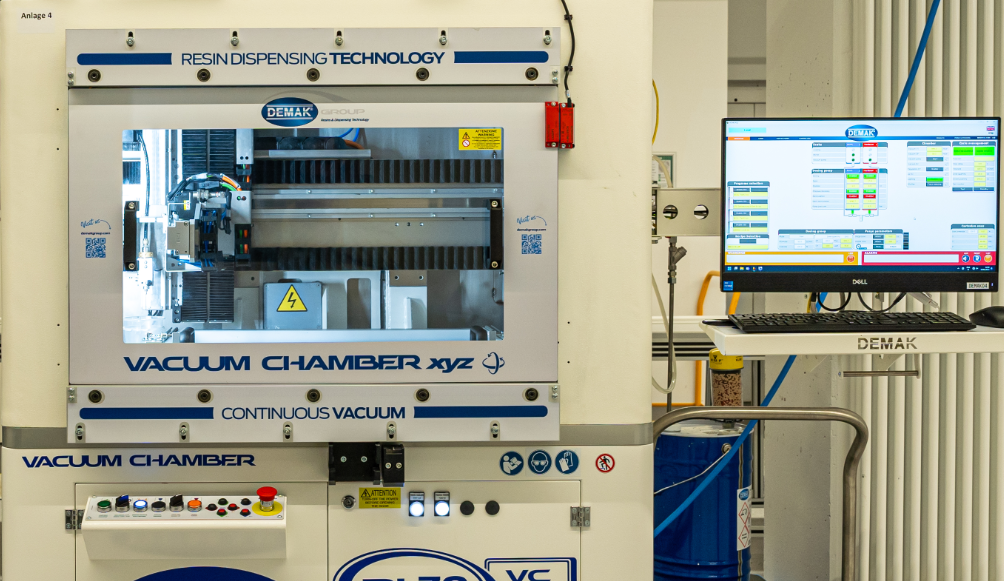Encapsulation under vacuum with a two-component epoxy system
In this process, a preheated polyurethane resin is poured into a casting body/mold under vacuum while a vacuum is applied in a chamber. The potting process in a vacuum causes degassing to take place inside. This technique removes the air bubbles in the potting compound, which has a positive effect on the end product. The very low encapsulation viscosity accelerates the filling process of the encapsulation body and generates a cavity/cavity-free encapsulation.

The casting body is better encapsulated with casting compound and is bubble-free. Another positive effect can be seen in the adhesion between the potting body and the potting compound. By removing the air (vacuum), the resin binds better to the surface structure of the component, which can be seen in the adhesion. The process stability and the assurance of qualified potting in the same dispensing quantity leads to consistently high potting results and minimizes rejects in the potting process.
Preheating and curing of the potting products in a vacuum plays a major role in the comprehensive consideration of the product development process and process reliability.
The encapsulation process is used, for example, in the fields of electrical industry, e-mobility and medical technology to protect electronic components against moisture penetration. The resin supports the sealing, insulation and stabilization of the components. Another aspect is the mechanical protection of the components that the potting compound provides. In addition, the potting compound supports heat dissipation and guarantees high thermal shock resistance to chemicals. Due to the encapsulation, the potting compound offers good resistance to environmental influences and other factors such as moisture.

Vacuum encapsulation is used for:
- transformers
- electric motors
- submersible pumps
- electrical and electronic components
- cable connections
- printed circuit boards
- sensors
